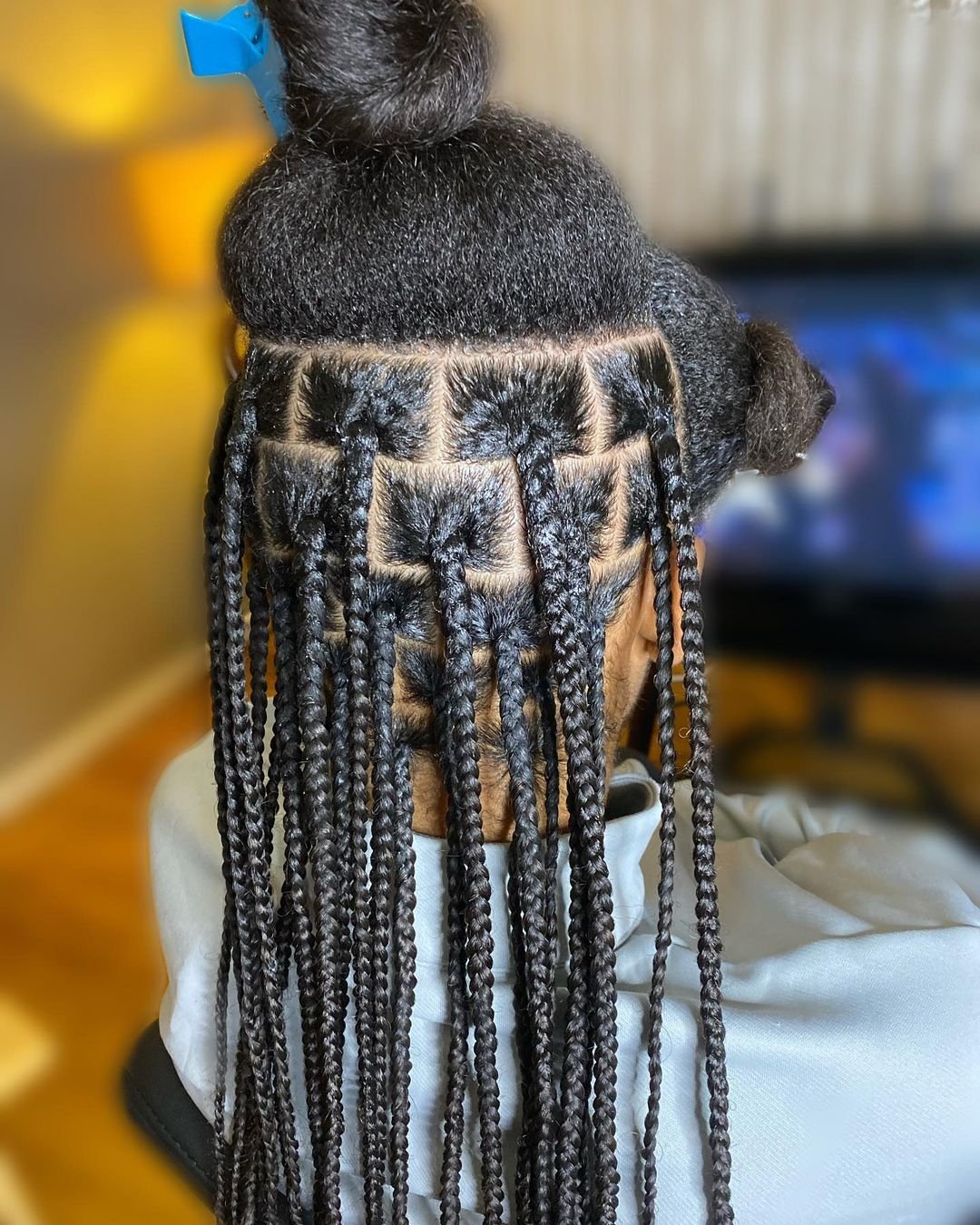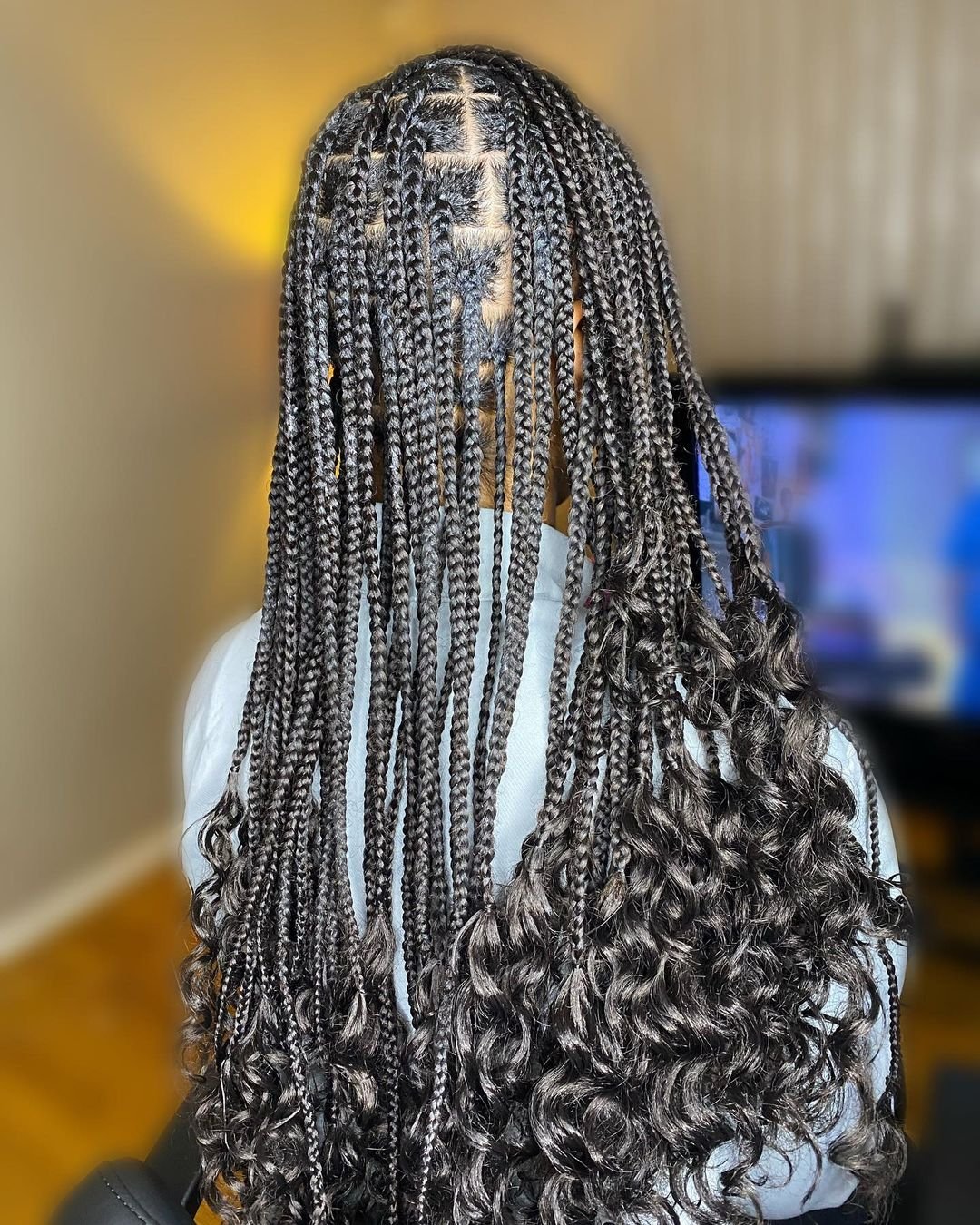Braid Hairstyles
How to Make Your Knotless Braids Last Longer
Knotless braids are a trend and a beautiful hairdo, but they may also be extremely expensive! Most beginners are concerned with how long the braids will last and how to extend their lifespan, especially given the expense. This article is for you if you fall into this category!
What are Knotless Braids?

As the name suggests, knotless braids lack knots. They use a feed-in braid technique, which is softer on your scalp, as opposed to an anchor knot.
The braiding hair extensions are progressively woven into your natural strands to give a smooth finish, preventing damage to your edges and stress on your scalp that could cause traction alopecia, a condition that causes hair loss as a result of increased stress. Since they are easier to style and less harmful to your hair than conventional box braids, they are also more attractive.
Benefits of Knotless Braids
Knotless box braids come with a lot of advantages. Overall, this is a protective hairstyle that will allow your hair to grow and thrive while allowing you to have long and stunning hair at the same time.
- It is a great protective look. The goal of this protective hairstyle is to have a hairstyle that puts the least amount of tension possible on your hair period.
- Knotless box braids can go up to two months between changes.
- Flexibility. Box braids offer versatility with hairstyling.
- Less tension on the hair lines and edges, chances of traction alopecia prevented.
- For rougher textures and tighter curls, knotless braids can stay longer, possibly for two to three months. They might not, however, last as long on silkier, finer textures with looser curls.
Difference Between Box Braids and Knotless Braids
The main difference between knotless braids and box braids is the use of hair in knotless braid creation which is consequently fed in to produce a natural seamless appearance.
Box braids are made by wrapping the hair in a knot. Both provide similar protective styles, however, it depends on the individual which is preferred.
Many remarks that knotless braids are the only ones for them because they are less unpleasant and seem more natural. Box braids, on the other hand, are said to be superior since they are less scalpy, do not draw attention to the roots, and stay significantly longer.
Everything boils down to personal preference, as was already mentioned. Choose the option that best meets your preferences and stick with it, or even better, try both options and discover which one suits you the best.
How Long Do Knotless Braids Typically Last?

Small Knotless Braids
Beautiful small knotless box braids have distinctive pieces that are roughly the width of a pencil. Braids this size should typically last six to eight weeks, depending on how well you take care of them. The small and micro braids are the most durable of all braid varieties.
Knotless Medium Braids
Since medium box braids take less time to make than small braids and have a beautiful appearance, beginners are typically advised to start with them.
Medium box braids have a width that varies from a penny to nickel and can endure for up to eight weeks.
Large and Jumbo Box Braids
A medium box braid is the size of a penny, and a large box braid is normally the size of a quarter or even larger for jumbo-sized braids. These braids frequently last a shorter time because of the large parts, and they also restrict easier access to scalp cleaning. Large box braids could last four or six weeks with upkeep.
Quick Tips to Make Knotless Braids Last Longer

Keep your hair well-groomed and protected with knotless box braids to get the most out of them. Box braids are a defensive hairstyle, and like all protective hairstyles, they may work against you if they are not properly cared for.
Washing Your Knotless Braids
Yes, your knotless braids can be washed. Frizz emerges after every wash, so you might want to pay attention to that. Note that you will need to mousse after the wash since knotless braids start with your natural hair.
To get rid of excess oils and dirt on the scalp in the interim, use dry shampoo. This is especially a must-have if you work out frequently. It is suggested to wash two to four weeks later, this is essential to avoid moisture, perspiration, oils, and dirt accumulation on your scalp, which can act as a haven for bacteria and fungus.
Washing knotless braids requires a gentle and careful approach to prevent frizzing or unravelling. Follow these steps to effectively wash your knotless braids:
- Preparing the Products: Gather the necessary products, including a sulfate-free shampoo, a lightweight conditioner or moisturizing spray, a wide-toothed comb or detangling brush, and a soft microfiber towel or t-shirt.
- Dilute the Shampoo: Mix a small amount of sulfate-free shampoo with water in a spray bottle or a separate container. Diluting the shampoo helps distribute it evenly without disrupting the braids.
- Wet the Braids: Use lukewarm water to dampen your braids thoroughly. Avoid using hot water, as it can cause frizz and damage the braids.
- Apply Shampoo: Spray or pour the diluted shampoo onto your scalp, focusing on the roots and areas where product buildup may occur. Gently massage the shampoo into your scalp, being careful not to disturb or rub the braids excessively.
- Rinse the Scalp: Rinse your scalp thoroughly with lukewarm water until all the shampoo is removed. It’s essential to ensure that no residue remains, as it can lead to itching and flaking.
- Condition the Braids: Apply a lightweight conditioner or moisturizing spray to the length of your braids. Use your fingers or a wide-toothed comb to distribute the product evenly. This step helps moisturize the braids and reduce frizz.
- Detangle with Care: Starting from the ends, gently detangle your braids using a wide-toothed comb or detangling brush. Work your way up towards the roots, being cautious not to tug or pull on the braids excessively. This process helps remove any knots or tangles and promotes a neat appearance.
- Rinse Thoroughly: Rinse the conditioner out of your braids with lukewarm water. Ensure that all the product is completely removed to prevent buildup.
- Dry Your Braids: Gently squeeze out excess water from your braids without twisting or rubbing them vigorously. Wrap your braids with a soft microfiber towel or a t-shirt to absorb moisture. Avoid using a regular towel, as its texture can cause frizz.
- Air Dry: Allow your braids to air dry naturally. Avoid using heat styling tools or blow dryers, as excessive heat can damage the braids and your natural hair.
To prevent odors, make sure your braids are totally dry after washing. Additional care recommendations that would ensure the longevity of the braids include the following:
- Use shampoo that leaves no residue to keep your scalp clean. A residue wash effectively removes product buildup and superfluous oils from the hair to clear it.
- Increased blood flow to the scalp from massaging hair oils would stimulate hair growth.
- To keep your hair in place and avoid messing up the style as you sleep, cover it with a silk or satin head scarf. This would keep frizz at bay and prolong the style due to its smooth and silky surface.
- Regularly groom and moisturize your braids. A leave-in conditioner, which hydrated the hair all day! Is great to have in hand and can be applied to the scalp.
- If your hair is matted and your scalp is exceedingly itchy, think about getting it removed.
- Knotless braids should only be worn for a maximum of six weeks. Expanding it would be damaging to the hair.
- Avoid over-styling because It could also add more tension to the edges and hairlines causing traction alopecia, a condition in which additional strain on the scalp causes hair loss.
- To add shine and tame frizz, keep a hair spray on hand! Additionally, maintaining neat, perfectly laid edges would keep braids and edges looking nice. To accomplish this task, edge-specific gels, smoothers, and conditioners are available.


